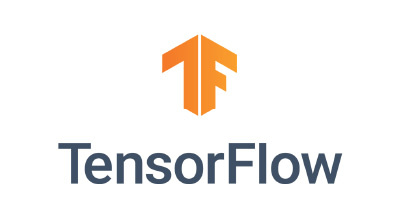TensorFlow is a popular framework of machine learning and deep learning. It is a free and open source library. It is a develop by Google Brain in 9 November 2015. The latest version of TensorFlow, name TensorFlow 2.0 in September 2019.

TensorFlow is derive from two Greek word Tensor and Flow.
- Tensor : Tensor is a multidimensional array is knows as Tensor
- Flow :- flow of data in operation is knows as flow.
The TensorFlow provides is multiple API (Application Programming Interfaces). These are classified into 2 major types.
- Low level API
- High level API
Advantages of TensorFlow
- It has platform flexibility.
- It is easily trainable on CPU as well as GPU.
- It is support for threads, asynchronous computation, and queues.
- It is a customizable
- It is a open source.
- TensorFlow is highly parallel and design to use various backends software.
Disadvantages of TensorFlow
- It is no support for OpenCL and Windows.
- It is a no GPU support.
- TensorFlow lacks behind in the speed.
Syntax
tf.constant(value, dtype, name = ” “)
TensorFlow Functions
- tensorflow.add(a, b)
- tensorflow.substract(a, b)
- tensorflow.multiply(a, b)
- tensorflow.div(a, b)
- tensorflow.pow(a, b)
- tensorflow.exp(a)
- tensorflow.sqrt(a)
Some example of TensorFlow function
import tensorflow as tf
x = tf.constant([2.0], dtype = tf.float32)
tensor_c = tf.constant([[3,4]], dtype = tf.int32)
tensor_v = tf.constant([[5, 6]], dtype = tf.int32)
print(tf.sqrt(x))
print(tf.exp(x))
print(tf.pow(x,x))
tensor_add = tf.add(tensor_c, tensor_v)
print(tensor_add)
tensor_sub = tf.subtract(tensor_c, tensor_v)
print(tensor_sub)
tensor_mul = tf.multiply(tensor_c, tensor_v)
print(tensor_mul)
tensor_div = tf.div(tensor_c, tensor_v)
print(tensor_div)
Tensorflow Architecture
- TensorFlow Servables
- TensorFlow Servables Versions
- TensorFlow Servables Streams
- TensorFlow Models
- TensorFlow Loaders
- TensorFlow Managers
- TensorFlow Core
- Sources in Tensorflow Architecture
- TensorFlow Batcher
Tensor Attributes
tensorflow.shape
Example of tensorflow.shape
import tensorflow as tf
p_shape = tf.constant([ [20, 21],
[22, 23],
[24, 55] ]
)
p_shape.shape
Output
TensorShape([Dimension(3), Dimension(2)])
tensorflow.zeros
Example of tensorflow.zeros
import tensorflow as tf
print(tf.zeros(22))
Output
Tensor(“zeros:0”, shape=(22,), dtype=float32)
tensorflow.ones
Example of tensorflow.ones
import tensorflow as tf
print(tf.ones([10, 10]))
print(tf.ones(m_shape.shape[0]))
print(tf.ones(m_shape.shape[1]))
print(tf.ones(m_shape.shape))
Output
Tensor(“ones_1:0”, shape=(10, 10), dtype=float32) Tensor(“ones_2:0”, shape=(3,), dtype=float32) Tensor(“ones_3:0”, shape=(2,), dtype=float32) Tensor(“ones_4:0”, shape=(3, 2), dtype=float32)
tensorflow.dtype
Example of tensorflow.dtype
import tensorflow as tf
p_shape = tf.constant([ [21, 22],
[23, 24],
[25, 26] ]
)
print(p_shape.dtype)
Output
<dtype: ‘int32’>
If you have any queries regarding this article or if I have missed something on this topic, please feel free to add in the comment down below for the audience. See you guys in another article.
To know more about tensorFlow please Wikipedia Click here
Stay Connected Stay Safe, Thank you.



0 Comments